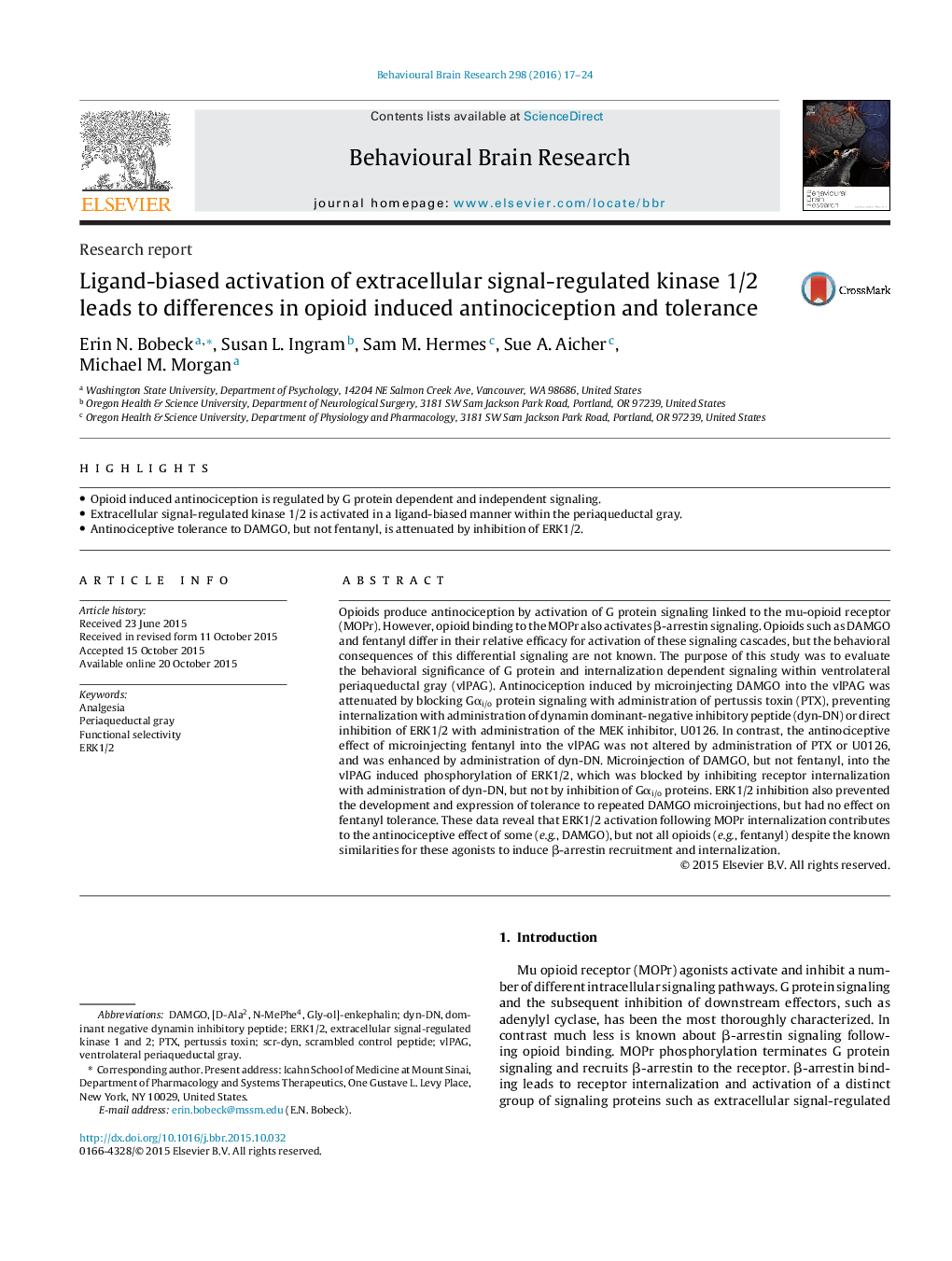| کد مقاله | کد نشریه | سال انتشار | مقاله انگلیسی | نسخه تمام متن |
|---|---|---|---|---|
| 6256254 | 1289914 | 2016 | 8 صفحه PDF | دانلود رایگان |
- Opioid induced antinociception is regulated by G protein dependent and independent signaling.
- Extracellular signal-regulated kinase 1/2 is activated in a ligand-biased manner within the periaqueductal gray.
- Antinociceptive tolerance to DAMGO, but not fentanyl, is attenuated by inhibition of ERK1/2.
Opioids produce antinociception by activation of G protein signaling linked to the mu-opioid receptor (MOPr). However, opioid binding to the MOPr also activates β-arrestin signaling. Opioids such as DAMGO and fentanyl differ in their relative efficacy for activation of these signaling cascades, but the behavioral consequences of this differential signaling are not known. The purpose of this study was to evaluate the behavioral significance of G protein and internalization dependent signaling within ventrolateral periaqueductal gray (vlPAG). Antinociception induced by microinjecting DAMGO into the vlPAG was attenuated by blocking Gαi/o protein signaling with administration of pertussis toxin (PTX), preventing internalization with administration of dynamin dominant-negative inhibitory peptide (dyn-DN) or direct inhibition of ERK1/2 with administration of the MEK inhibitor, U0126. In contrast, the antinociceptive effect of microinjecting fentanyl into the vlPAG was not altered by administration of PTX or U0126, and was enhanced by administration of dyn-DN. Microinjection of DAMGO, but not fentanyl, into the vlPAG induced phosphorylation of ERK1/2, which was blocked by inhibiting receptor internalization with administration of dyn-DN, but not by inhibition of Gαi/o proteins. ERK1/2 inhibition also prevented the development and expression of tolerance to repeated DAMGO microinjections, but had no effect on fentanyl tolerance. These data reveal that ERK1/2 activation following MOPr internalization contributes to the antinociceptive effect of some (e.g., DAMGO), but not all opioids (e.g., fentanyl) despite the known similarities for these agonists to induce β-arrestin recruitment and internalization.
Journal: Behavioural Brain Research - Volume 298, Part B, 1 February 2016, Pages 17-24
